Kombucha Mold Info
What novice brewer often think might be Kombucha mold is often not. If you are one of our customers, and you decided to brew the tea the old fashion traditional way, do not throw out any batch of tea that you suspect might have Kombucha mold. Contact me first.
The better way to brew Kombucha, and preventing a mold contamination, is to ferment the tea using my proprietary EZ BREW METHOD. This much better way of home brewing Kombucha is only shared with my customers. I do not wish to have unscrupulous competitors marketing it.
If you brew the tea the old fashion traditional way a Kombucha mold contamination may occur. For this reason I recommend the purchase of at least two cultures. One culture you will keep in the fridge as a back-up.
Most all household food molds that might grow on a forming Kombucha mushroom are not poisonous but do ruin the taste of the tea. Taste test a small amount of tea using a straw if you suspect a mold contamination. Doing so is not likely to do you any harm. The environment inside your gut is not going to allow mold to grow. It is not however recommended that you test this statement out by drinking a glass of moldy Kombucha Tea. If mold is pervasive on the surface of the mushroom toxins can be released into the tea.
There are many types of molds. Those you most often will see growing on a Kombucha mushroom are the same type of common molds you might find growing on other food products in your home. These are usually blue, green, black, or white in color. They are not dark brown in color.
Often novice brewers of Kombucha will mistake the dark brown fermentation gunk that sometimes first floats to the surface in a batch of fermenting tea as a mold. This stuff, as ugly as it appears is not mold. As the mushroom slowly forms and thicken it will eventually cover this gunk.
Google Ad
[wp_ad_camp_2]
How to Help Avoid Mold Contamination
Most molds prefer a cool and damp environment so it is important that you keep a batch of fermenting tea at a constant temperature between 74F and 84F. Store the brewing container in a dry area. The ideal temperature for the growth of a mushroom is about 79F.
It is also advisable not to use loose leaf teas. Depending on the source loose leaf tea if not properly cleaned may harbor mold spores.
Mold spores are present in every home, they waft and float unseen in the air. You even breath them in, but seldom do they ever pose a health threat. As an example the outside mold count in Houston, TX averages 1300 per cubic meter of air.
Air conditioning units provide an excellent environment for mold. Inside the a/c dust and cool moisture combine as it cycles on and off. When turned on mold spores circulate through the home. If you believe that your home is free of mold spores leave out a piece of moist bread on your kitchen counter for several days. You will quickly change your mind.
If you make the tea the old fashion traditional way any mushroom grown is susceptible to a Kombucha mold contamination. No one has changed the genetic or DNA composition of Kombucha bacteria and yeasts to develop a mold resistant Kombucha. If anyone tells you their mushrooms are resistant to molds they are just feeding you a line of B.S.
As the tea ferments it produces alcohol and grows more acidic. The bacteria and yeast of Kombucha thrive in an acidic environment while Kombucha mold does not. Mold grows on the surface of a forming mushroom, not inside a mushroom, or in the tea, or under the mushroom. Often seen hanging from the underside of a forming mushroom are dark brown root filaments. These are often mistaken for a mold contamination.
While the tea is fermenting avoid disturbing the tea by unnecessarily uncovering it to check out what is forming on the surface. If you do so you increase the risk of mold spores getting to the forming mushroom.
Avoid using bowls to ferment the tea in, they are difficult to cover and not easily handled. They also increase the surface area of the tea giving mold spores a greater opportunity to contaminate. Other tips on preventing a Kombucha mold contamination are given in the directions my customers if they wish to brew Kombucha the old fashion traditional way, but this is not recommended.
Even if you do everything properly in preparing the tea a Kombucha mold contamination can occur. Using my EZ BREW METHOD this will be avoided. If your batch of tea does become contaminated with Kombucha mold because you brewed the tea the old fashion traditional way, and it is pervasive, you should toss everything out. Thoroughly clean the inside of the brewing container with soap and water. Keep a spare mushroom properly stored in the fridge to use as a back-up in case of a mold contamination.
Some people will try and clean a mushroom off using a solution of water and vinegar if they find Kombucha mold growing on their mushroom. Sometimes this will work if the contamination is not pervasive, but most often it will not because there may be an abundance of unseen mold spores covering the mushroom, or on the inside of the brewing container.
Not all mushrooms you may grow may look as uniform in appearance as the one shown immediately below. Appearance or thickness will vary but this is not important, you are not eating it. The important thing is that the tea ferments properly.
I strongly recommend that all customers brew their tea using the EZ BREW METHOD and not the old fashion traditional way. Directions are free when you purchase cultures.
Google Ad
[wp_ad_camp_2]
Perfectly Formed Kombucha Mushroom
The below photos show the mushroom, as was grown by me, using the traditional method of fermentation.

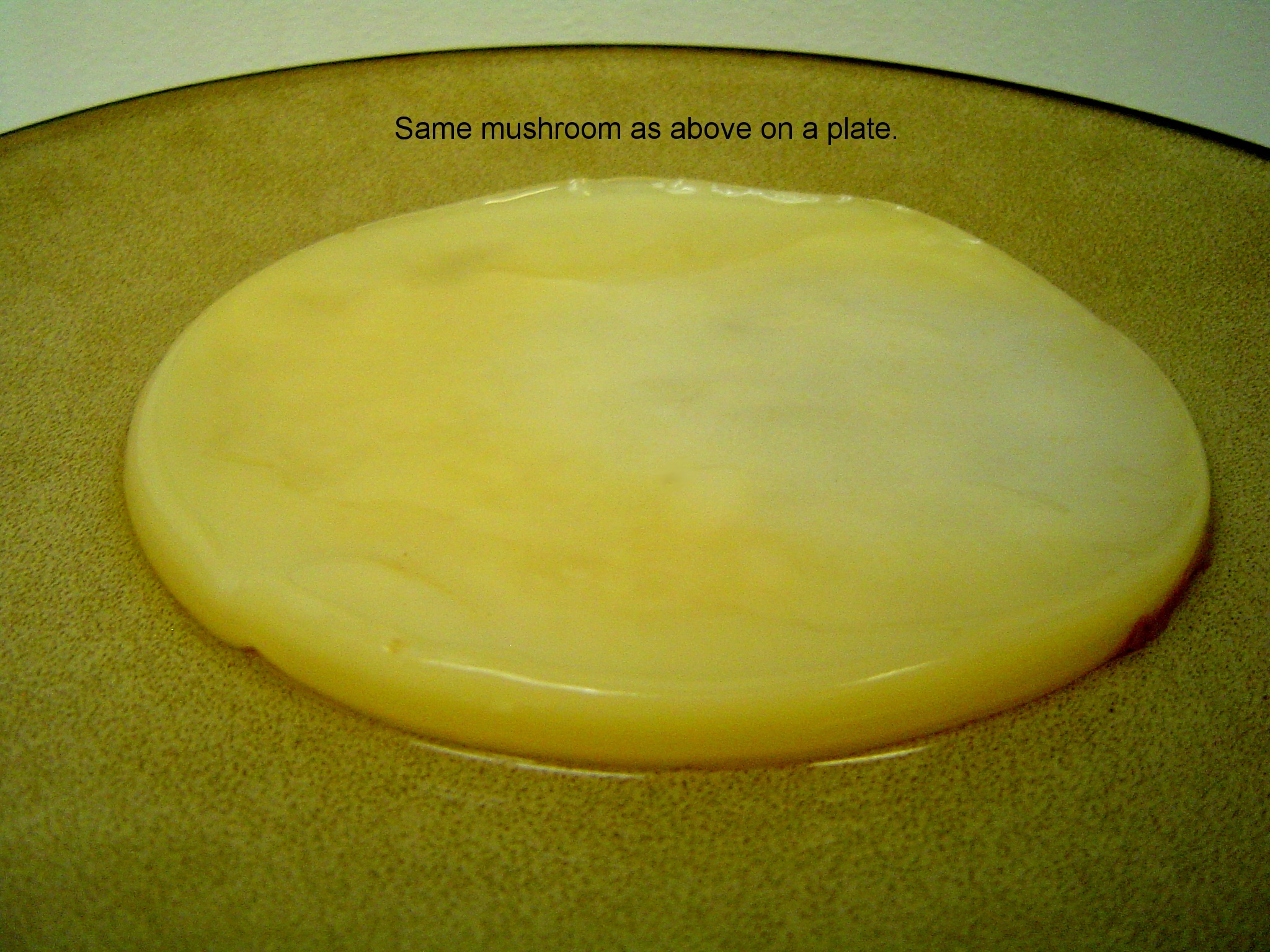
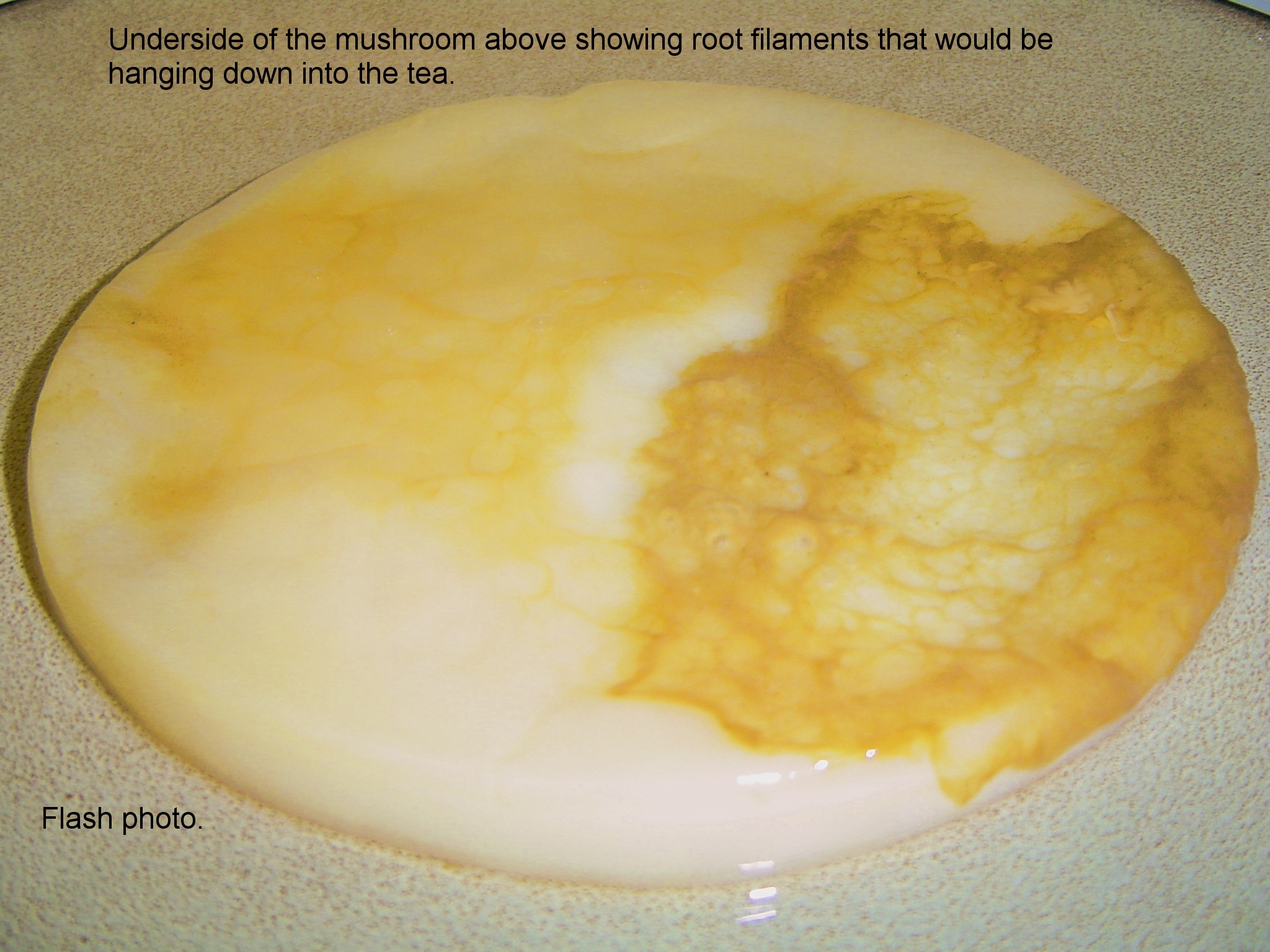
Kombucha Mushrooms With No Mold
The below photos are those of mushroom grown by novice brewers. Growth formation of the mushroom often varies when fermenting the tea the old fashion traditional way, as does the quality and taste of the tea. Use of our EZ BREW METHOD lessens the variability in the quality and taste of the tea produced.
Below photo shows root gunk
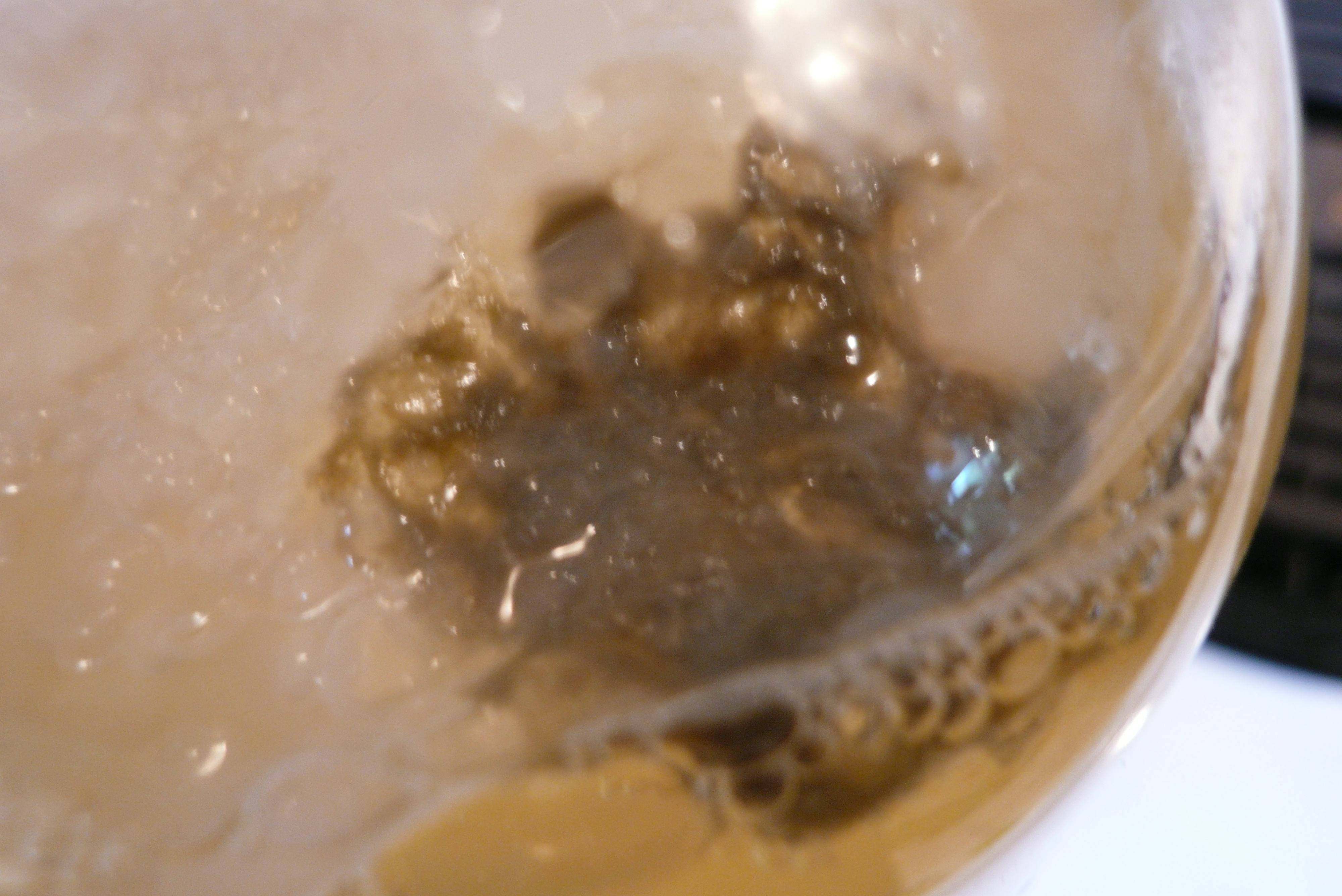
Shown below carbonation bubbles on surface of the mushroom and discoloration due to type of tea being used.

Below photo shows root gunk along the edge of the glass on the underside of the whitish mushroom.

Photo below shows carbonation bubbles on surface and root fibers hanging down.
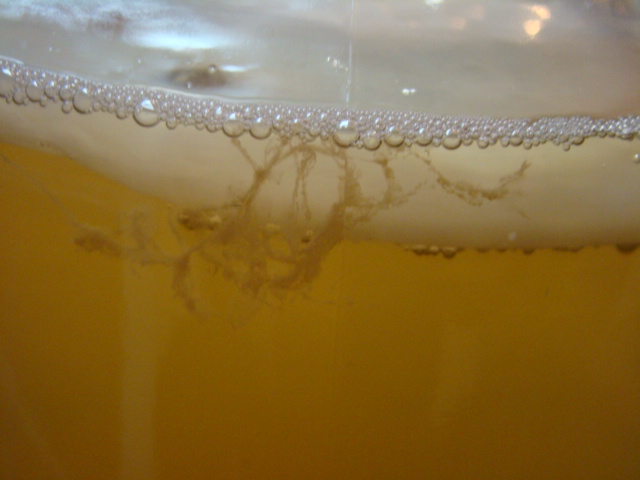
Below photo shows a large carbonation bubble scar. Bubbles can sometimes bust through the forming skin of a developing mushroom. The mushroom will try to repair the damage. Carbonation gases caught on the underside of a mushroom can make it look lumpy.
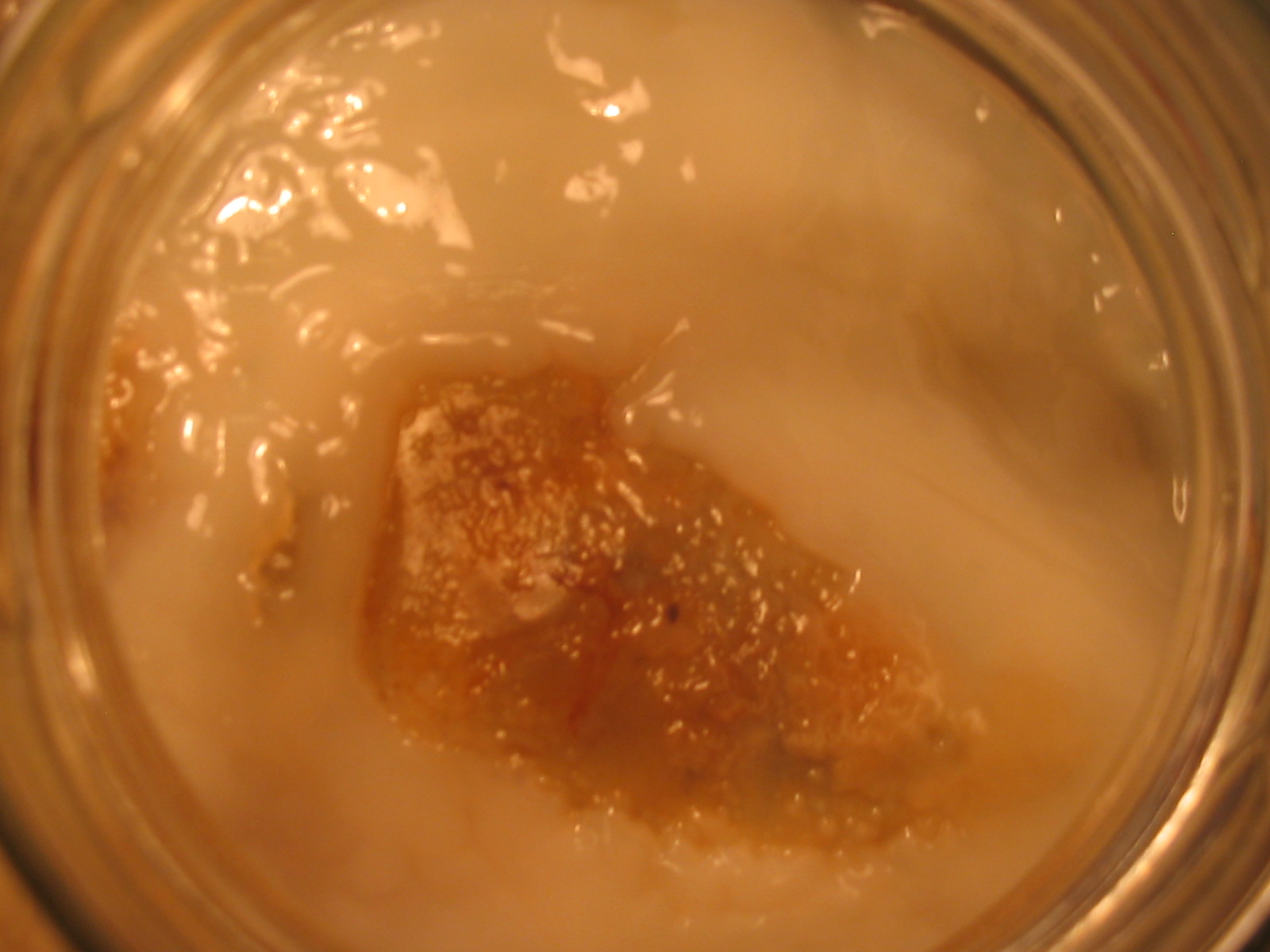
Shown below irregular growth of a mushroom probably due to it fermenting at too high of a temperature. This causes carbonation gases to disrupt the uniform growth of the mushroom.

Below photo shows a very thin forming mushroom with whitish bacteria and yeast colonies starting to form. These will later grow together and form into a mushroom. Also seen is dark brownish root gunk on the surface.
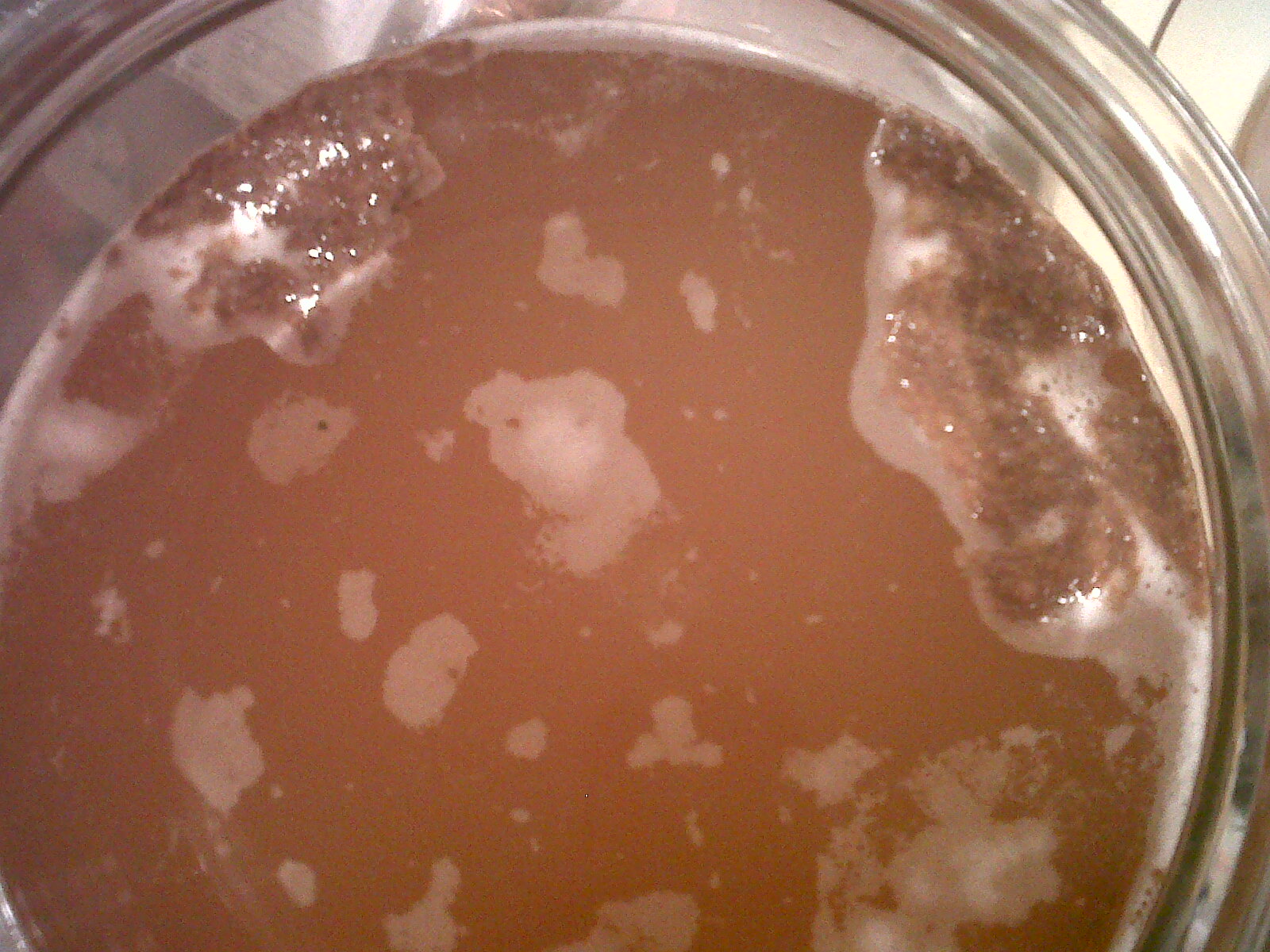
Another photo shows a lumpy mushroom with scaring caused by carbonation bubbles.

Below photo shows a thin mushroom that has not risen to the surface. The stuff higher in the jar is a cloud of bacteria and yeasts starting to form a new mushroom on the surface.

As bad as it looks, shown below is more root gunk. The color is more greenish because of the type of tea used.

Same photo as above, this mushroom has become dislodge from the surface because the jar has been disturbed.
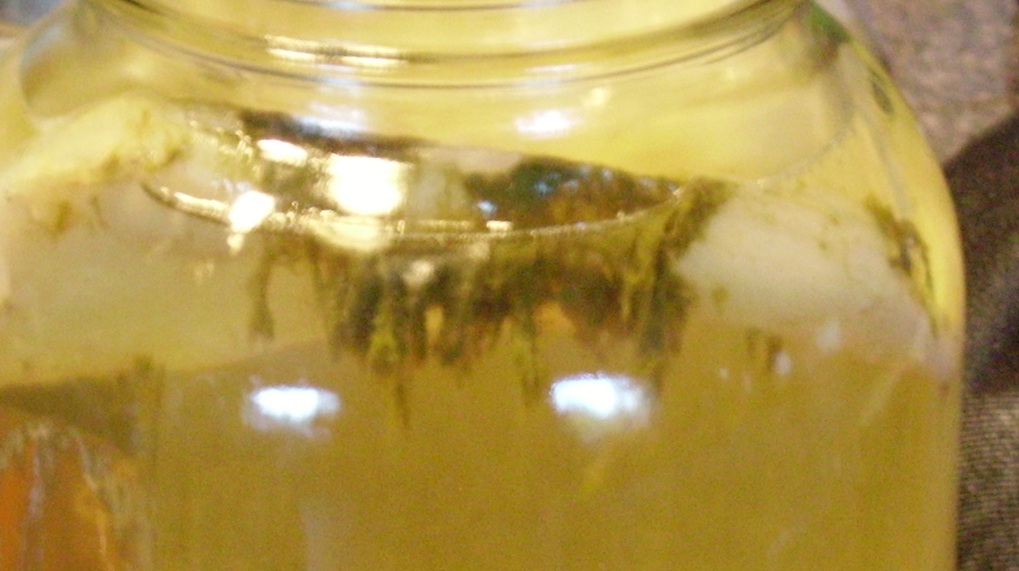
Below photo shows a thinly formed mushroom with dark root gunk seen through the thin skin of the mushroom. The mushroom if left to grow will thicken and cover this root gunk.

Shown below more root gunk near the surface before the mushroom has started to form to cover it.

Google Ad
[wp_ad_camp_2]
Kombucha Mushrooms with Mold
Most molds appear fluffy or powdery and appear in more than one spot and can quickly spread. A badly contaminated mushroom smells moldy. Do not confuse this with the smell of the fermenting tea which smells more like overripe apples and vinegary. Throw out any batch of tea you suspect to be contaminated if you are sure it is mold.
If you think a batch of tea is contaminated and you are one of my customers contact me for help. Take a photo of what you think is mold and send it to me if possible.

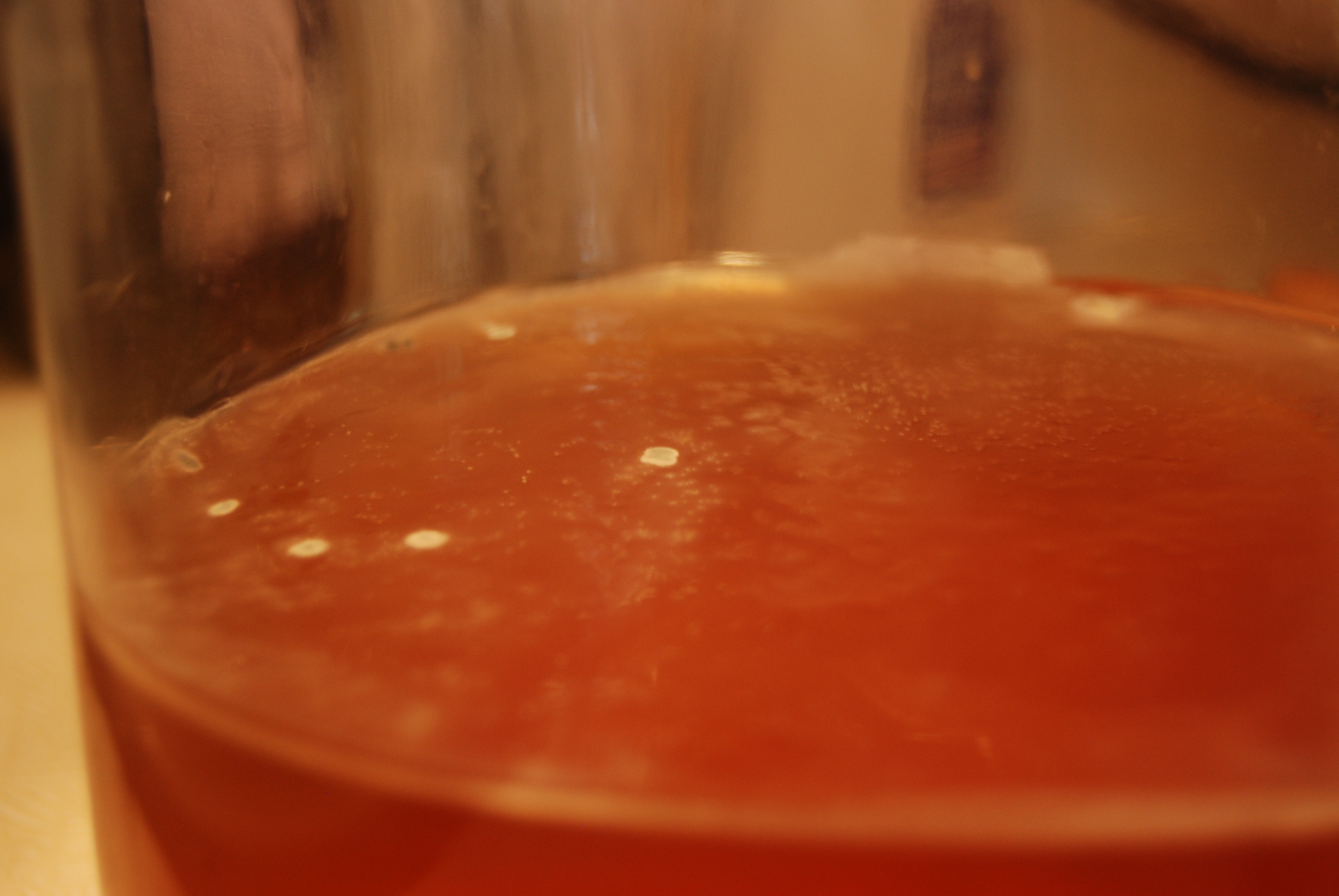
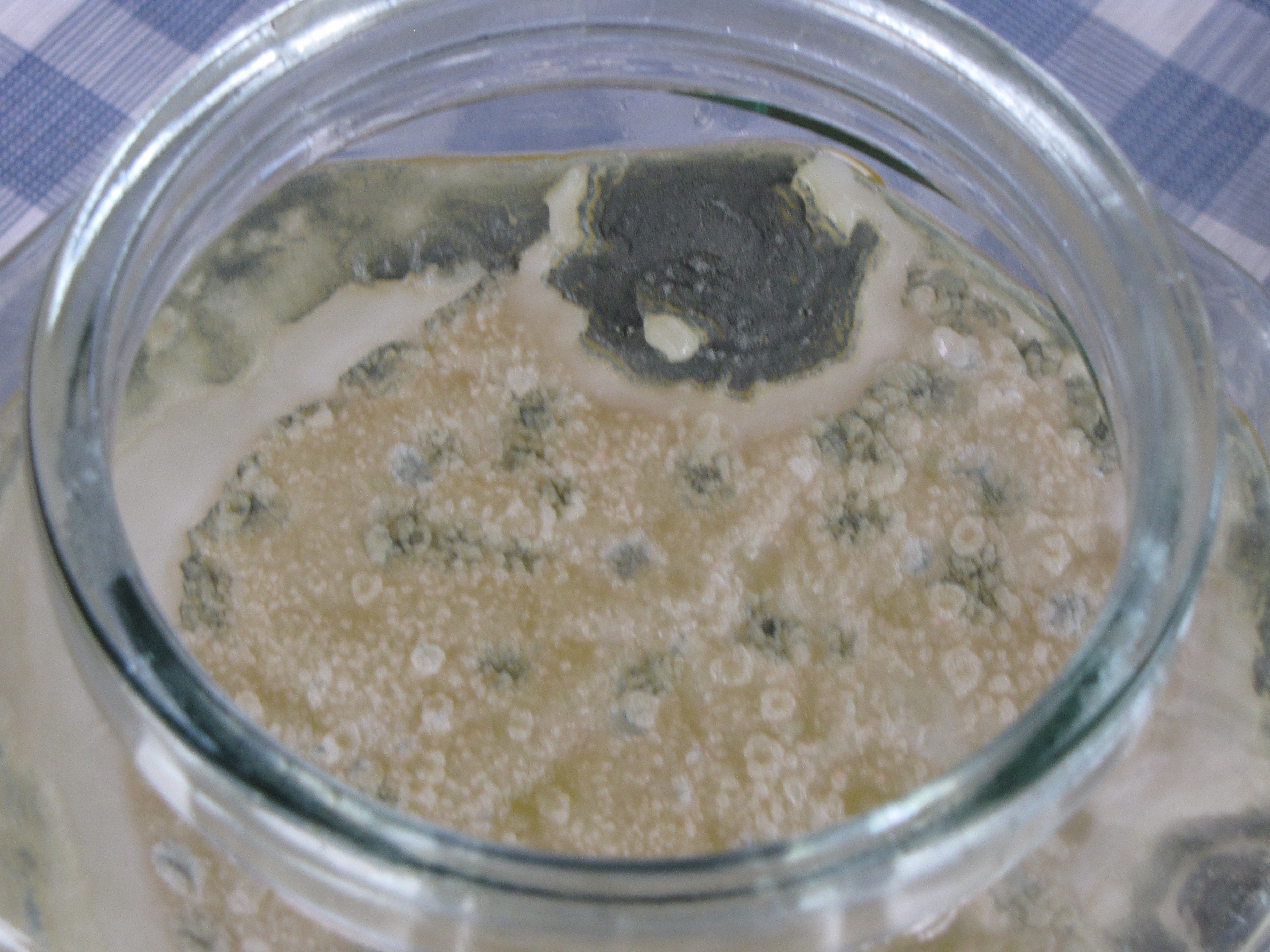
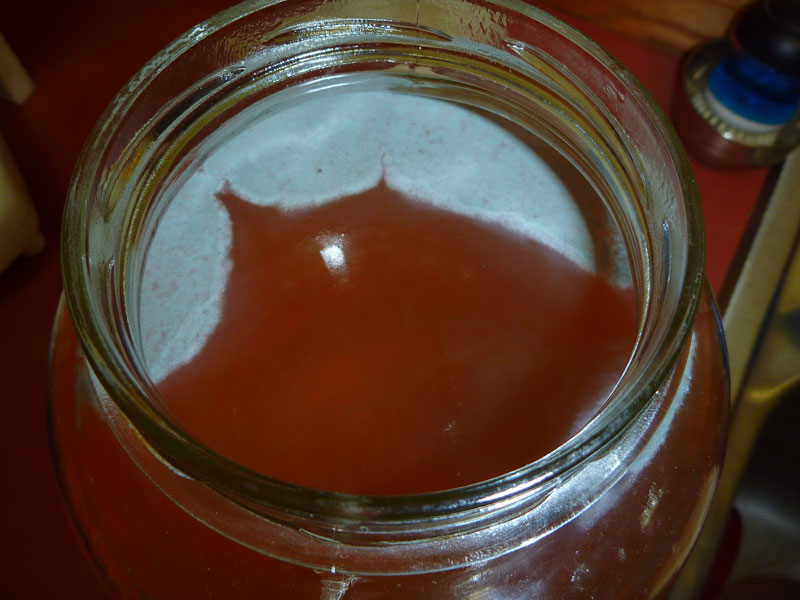
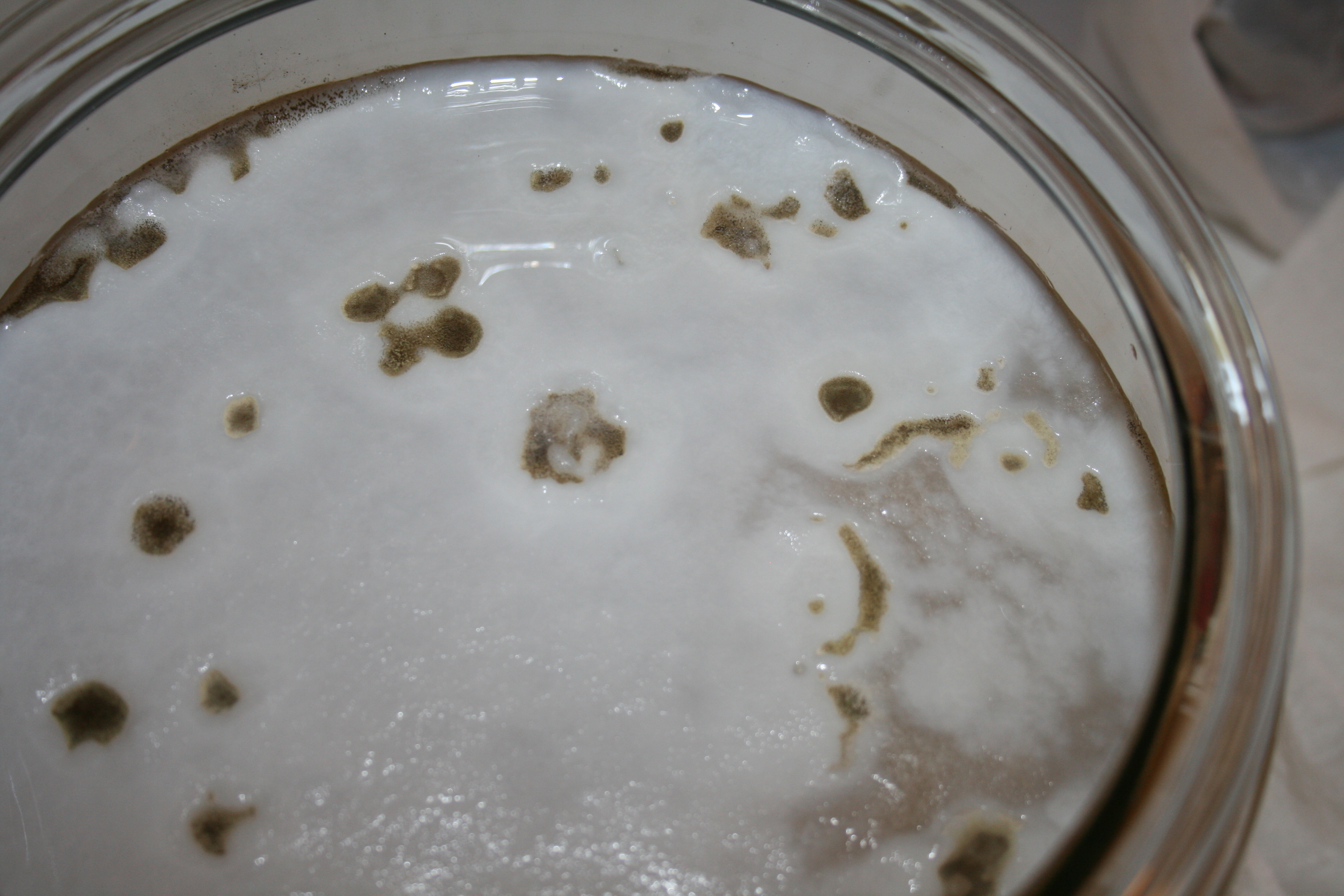
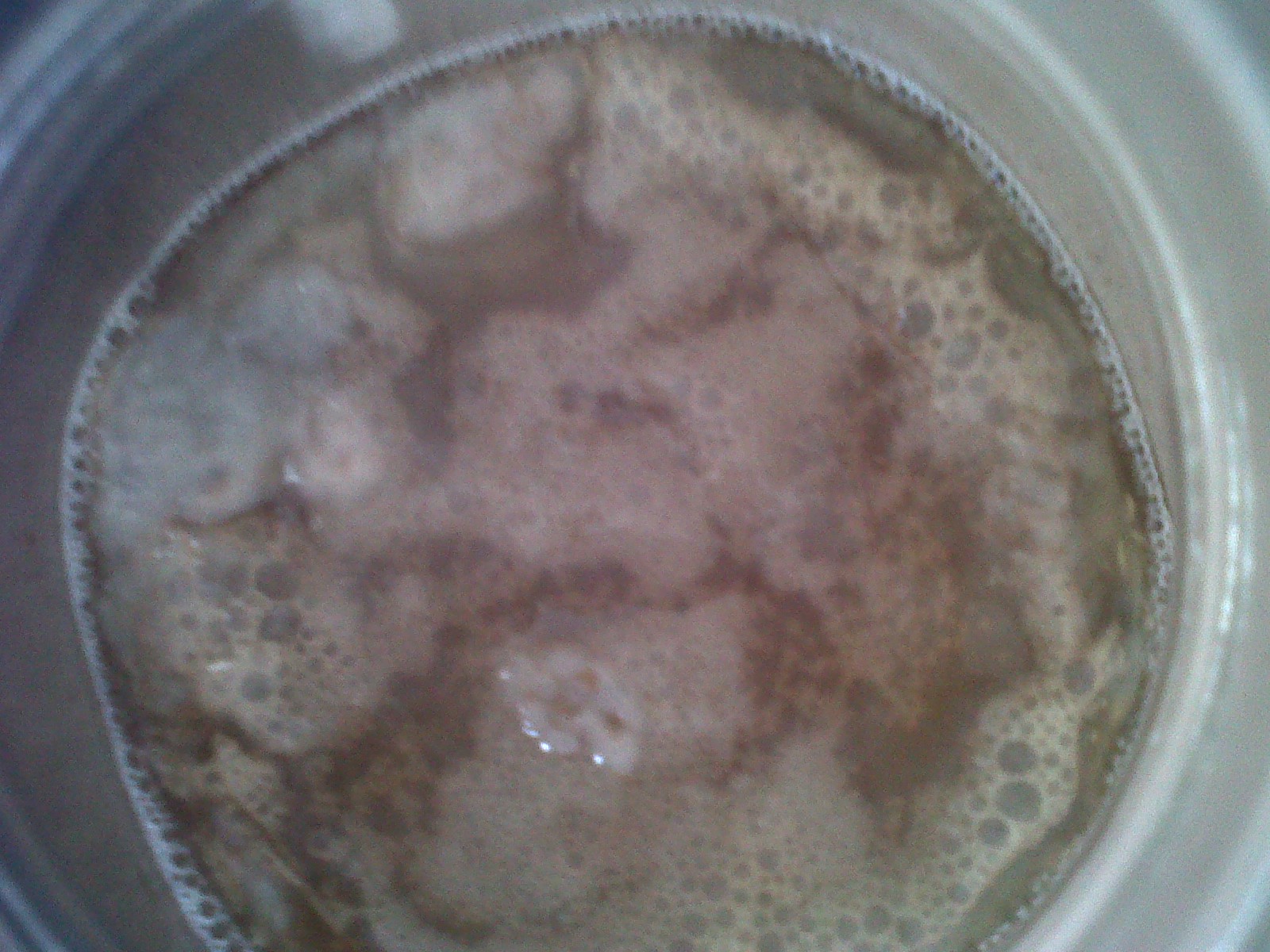
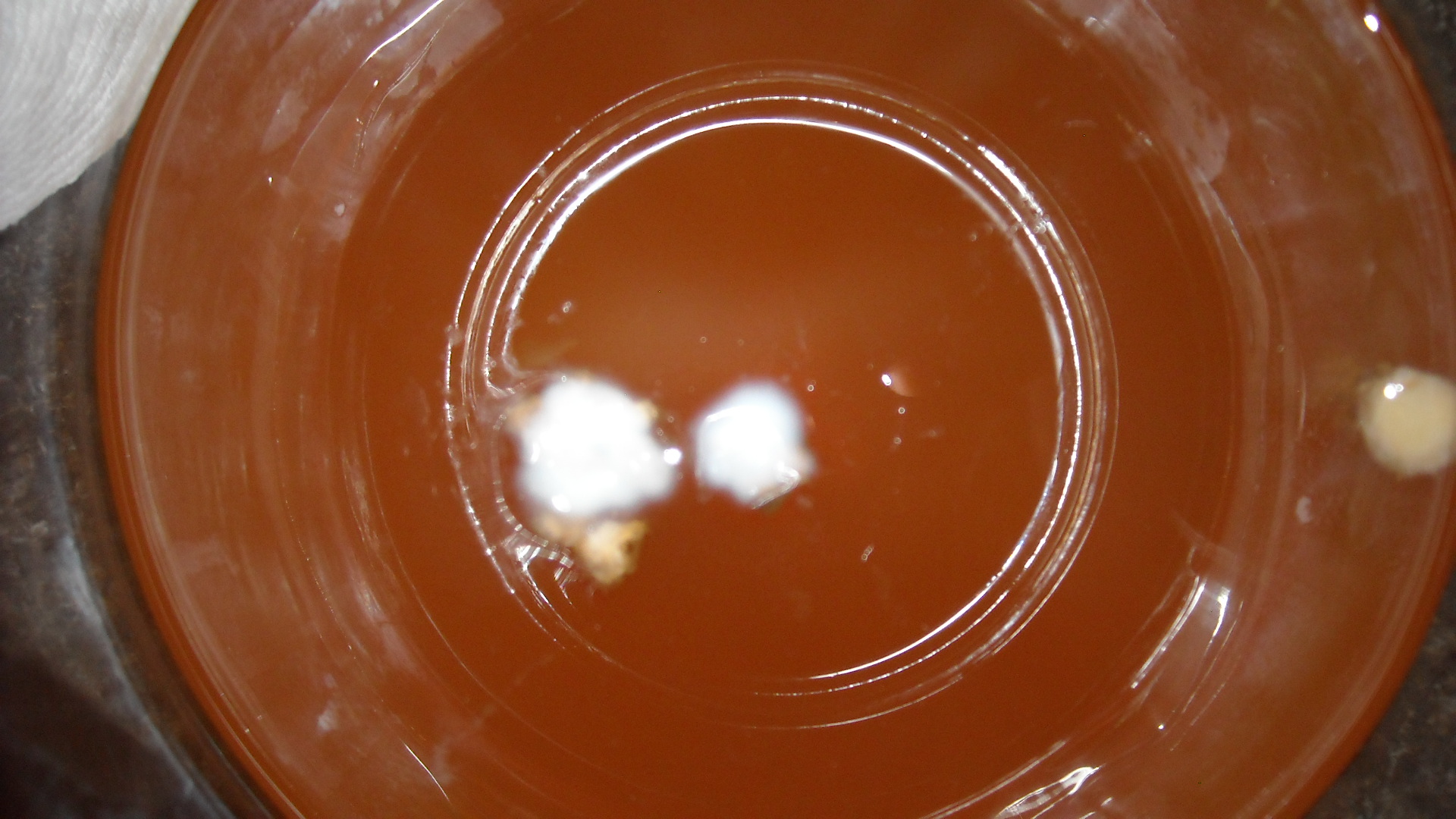
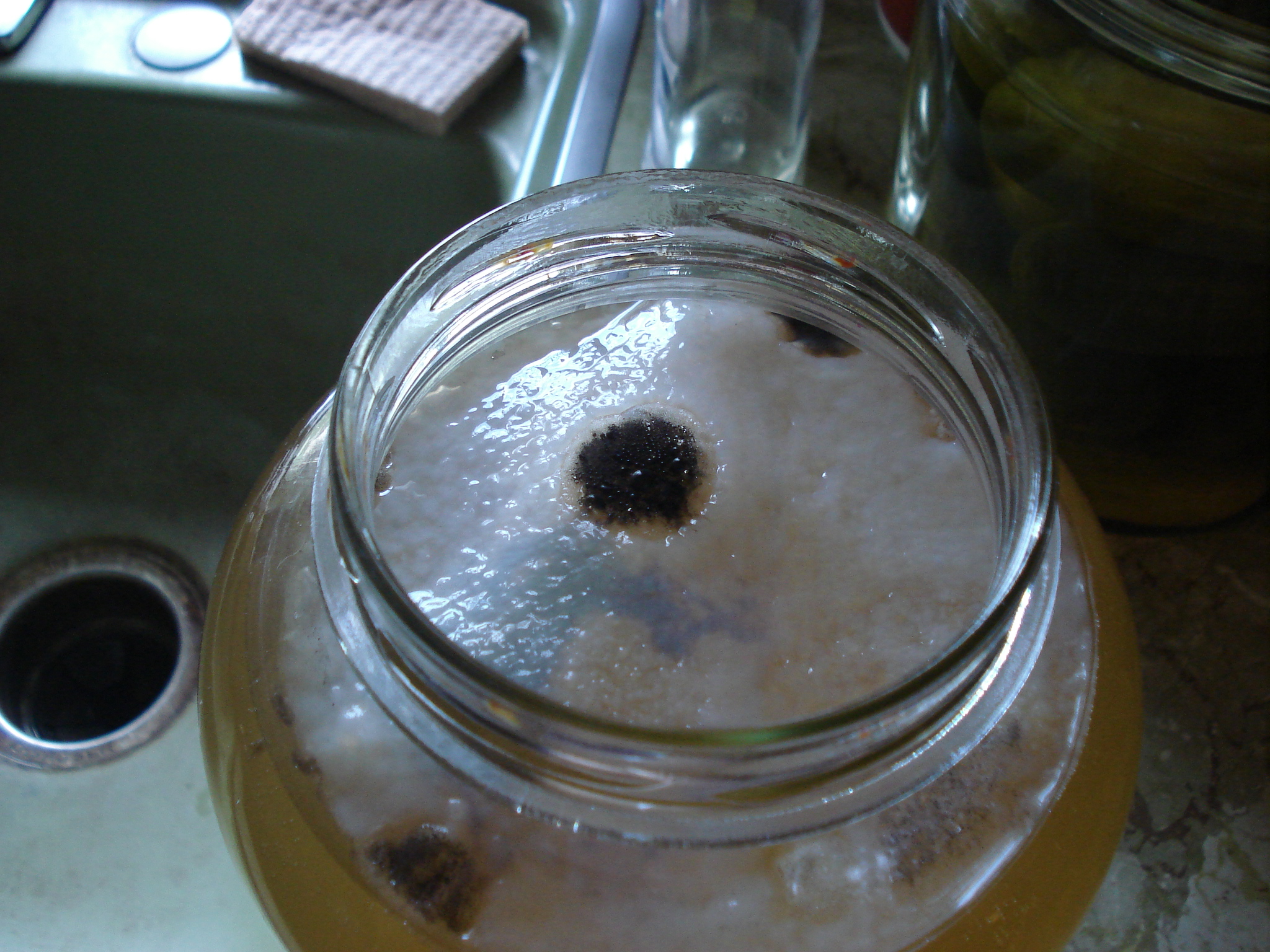
Dear Visitor,
Sadly little in life is free ![]()
Web-sites cost money and time to maintain. Many visitors are only looking for free information, which I am happy to provide. In return I only ask visitors notice the Google Ads.
See one of interest visit that advertiser. Doing earns a few cents helping to maintain this site for your benefit as well as others.
Thanks!
Google Ad
[wp_ad_camp_2]